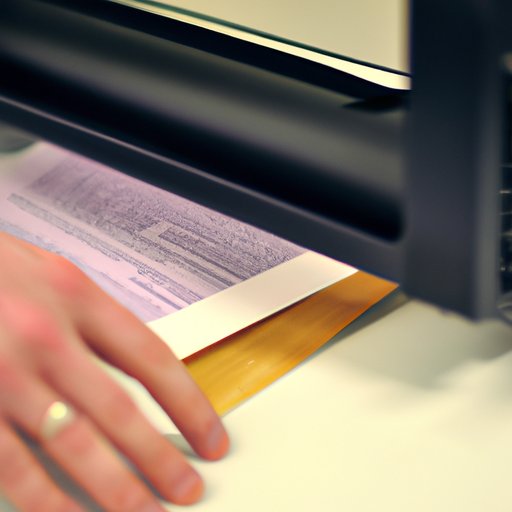
I. Introduction
Printing a book is a labor of love, requiring patience, hard work, and creativity. Whether you are a self-published author or a budding writer looking to create your first masterpiece, printing a book can be a daunting task. With so many different formats, binding techniques, and printing options, it can be difficult to know where to start.
In this guide, we’ll explore the ins and outs of book printing, from formatting and binding to finding a good printer and avoiding common rookie mistakes. By the end of this article, you’ll have a comprehensive understanding of book printing that you can put into practice when printing your own book.
II. Print Your Own Book: A Step-by-Step Guide for Self-Publishers
Self-publishing is a popular option for authors who want to retain creative control and maximize their profits. When printing your own book, there are a few key tips to keep in mind.
First, choose a high-quality paper that complements your content. Consider factors such as thickness, texture, and color. You’ll also need to format your book for printing, paying attention to margins, font sizes, and line spacing.
Next, decide on a binding technique that suits your needs. Options range from perfect binding to saddle stitching, and each has its unique advantages. Finally, proofreading and editing are crucial to ensuring your book is error-free and polished.
When it comes to finding a good printer, you have many options. You can choose from traditional printing services or use online printing services to save time and money. Do your research and compare prices, quality, and turnaround times before making a decision.
III. From Manuscript to Bestseller: The Printing Process Explained
From manuscript preparation to book design and production, the book printing process involves many steps. Understanding these steps can help you make informed decisions about formatting, binding, and printing options. Here’s a brief overview of the process:
– Manuscript preparation: This involves formatting the manuscript, proofreading, and editing.
– Book design: This includes cover design, interior layout design, and typography.
– Pre-press: This involves preparing files for printing, including checking for errors.
– Printing: This is the actual printing of the book, which can be done using a traditional printer or Print-on-Demand services.
– Binding: This involves stitching or gluing the book together, adding covers and trim.
For bigger publication projects, outsourcing some of these steps may be the best option. Professional designers and editors can help ensure that your book is of the highest quality.
IV. DIY Book Printing: Save Money By Doing It Yourself
Printing your book at home can be a cost-effective option, especially if you are on a tight budget. With a high-quality home printer and some basic bookbinding materials, you can create professional-looking books from the comfort of your own home.
To get started, choose a paper that is suitable for your printer and binding technique. Gutter margins and bleeds are also important considerations when formatting your book. Once your book is formatted, simply print and bind it using materials such as binding tape, glue, and cover stock.
V. The Different Options to Print Your Book in the UK/US
There are several options available for printing your book in the UK or US. Print-on-Demand (POD) services have revolutionized the self-publishing industry, allowing authors to print their books on demand and avoid upfront costs and minimum order quantities. Traditional printing services can be a better option for larger print runs, and e-book publishing is a popular choice for digital publications.
It is important to consider the pros and cons of each option before making a decision. POD services may be more expensive per copy, but they offer greater flexibility and convenience. Traditional printers may have higher upfront costs, but they can be more cost-effective for larger print runs. E-book publishing, on the other hand, is a good option for digital publications that can be read on mobile devices.
VI. Tips for a Successful Printing Experience: Avoiding Common Rookie Mistakes
Printing a book can be a complex process, and there are several common mistakes that people make. These include formatting errors, poor proofreading, and using low-quality paper or printing materials.
To avoid these rookie mistakes, pay close attention to printing specifications, proofread your book multiple times, and consider using high-quality paper and binding materials. Ordering a print proof can also help identify any errors before printing the entire run of books.
VII. Conclusion
Printing a book can be a challenging but rewarding experience. By following these tips and understanding the book printing process, you can create a high-quality book that meets your needs and budget. Whether you’re a self-publishing author or a budding writer, the tips and advice in this guide can help you take your first steps towards becoming a successful self-publisher.




